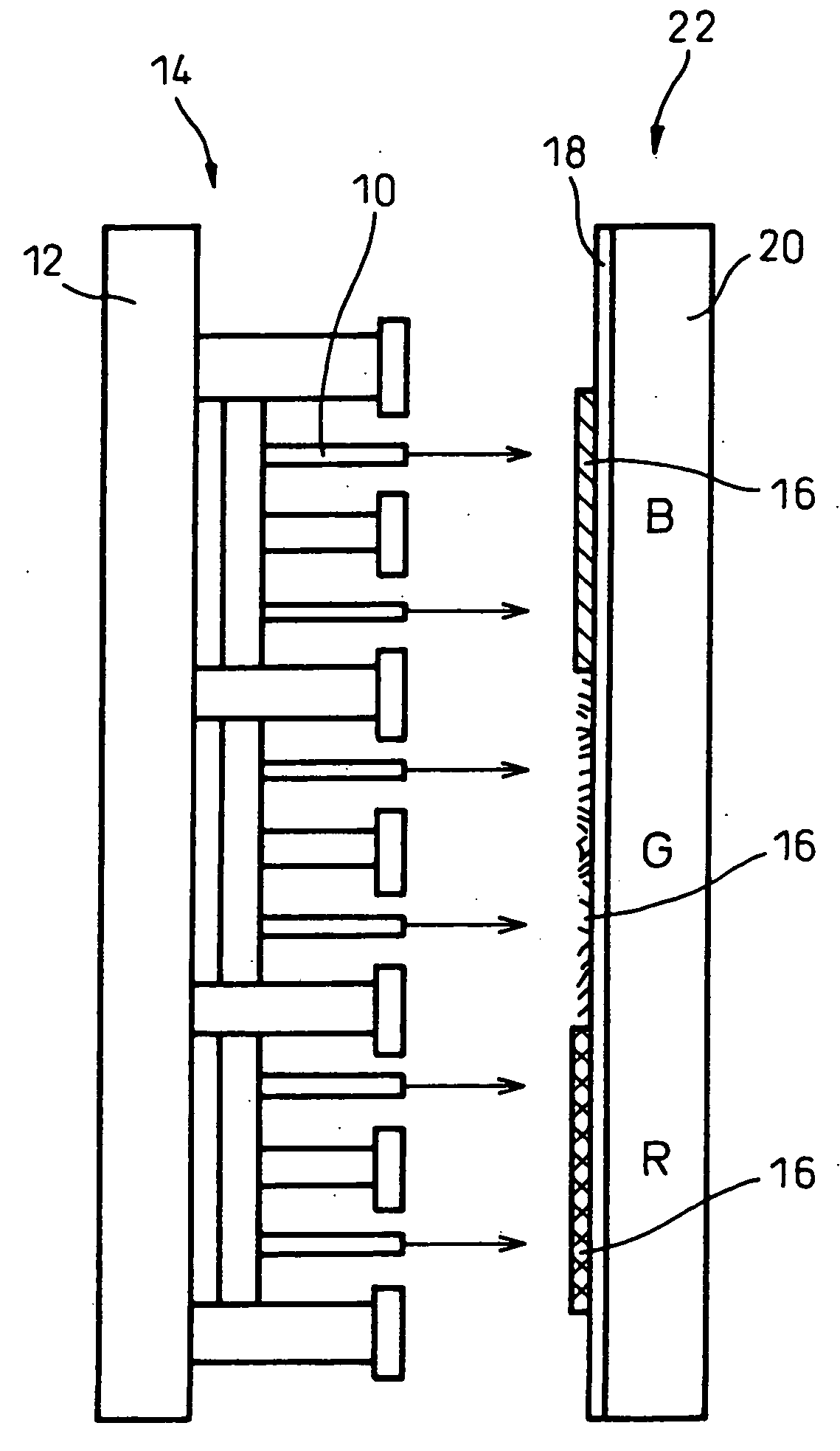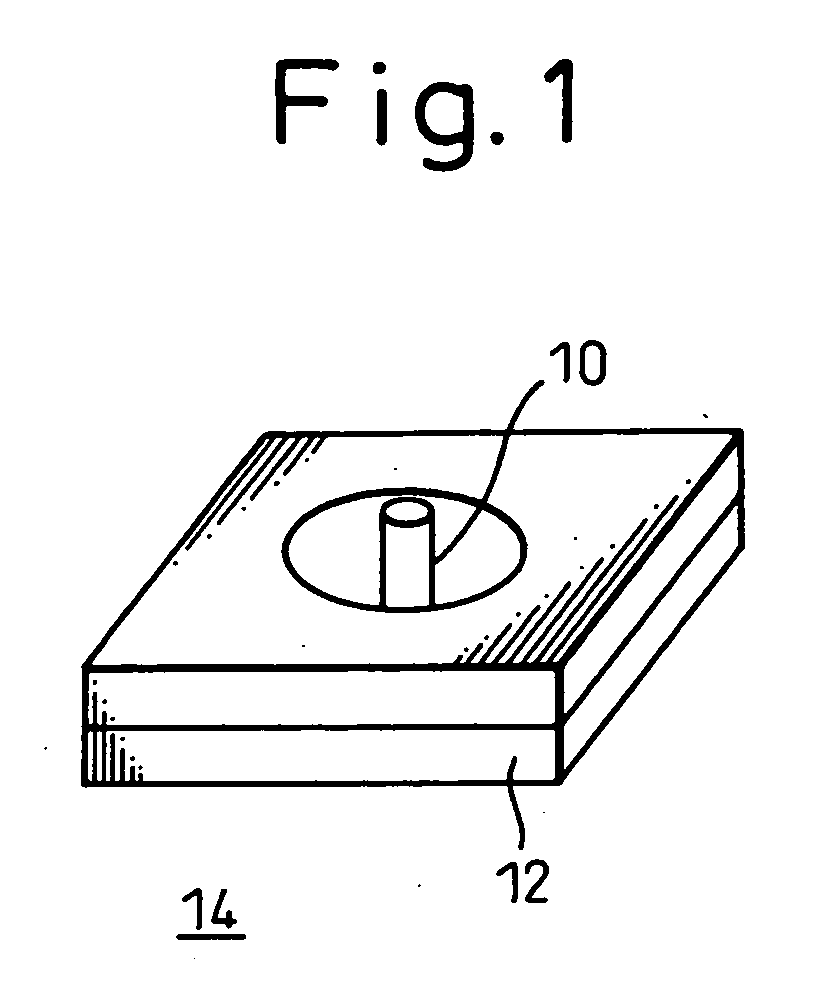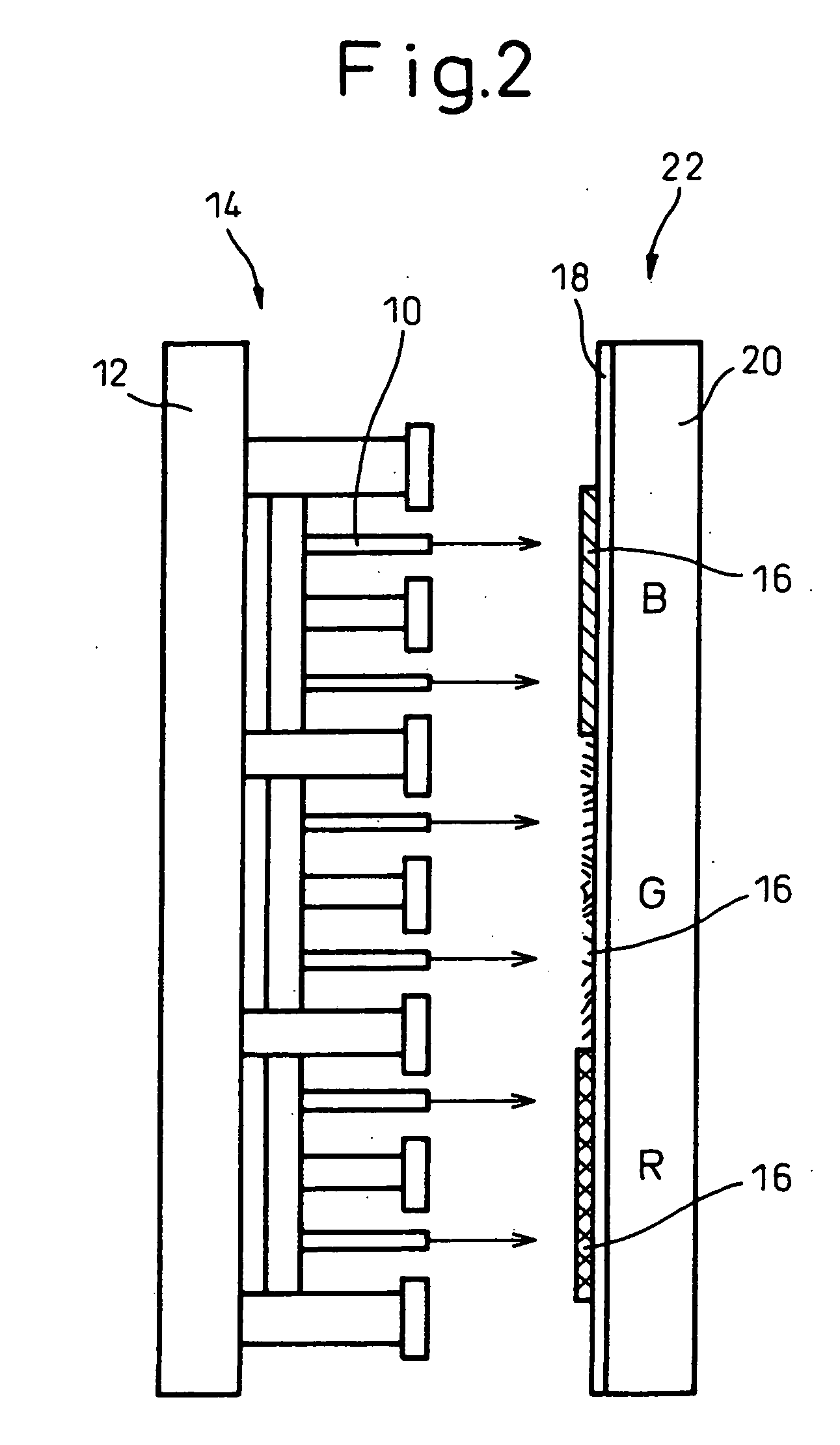Electrode for electron gun and electron gun using same
a technology of electron gun and electron gun, which is applied in the manufacture of electrode systems, electric discharge tubes/lamps, and tubes with screens, etc., can solve the problems of difficult to orient carbon nanotubes in one direction, and difficult to achieve high-quality electron beams. , to achieve the effect of small work function, excellent stability and high controllability
- Summary
- Abstract
- Description
- Claims
- Application Information
AI Technical Summary
Benefits of technology
Problems solved by technology
Method used
Image
Examples
example 1
[0030] To a composition consisting of 40 parts of chlorinated vinyl chloride resin (T-741; manufactured by Nippon Carbide Industries Co.) and 20 parts of furan resin (VF303; manufactured by Hitachi Chemical Co.), 40 parts of natural graphite powder (mean particle diameter of 5 μm; manufactured by Nippon Graphite Industries Co.) and 20 parts of diallyl phthalate monomer as a plasticizer were added, dispersed and mixed, and molded in the shape of fine filament by extrusion molding, and then carbonized in a nitrogen gas atmosphere with 1000° C., and further in argon gas atmosphere with 2000° C. to obtain a carbonaceous electrode of 0.2 mm in diameter.
[0031]FIGS. 1 and 2 show the construction of the essential part of a field emission type cold cathode. FIG. 1 shows the basic construction of the unit, and FIG. 2 shows a cross-sectional view of the cathode units arranged in an array.
[0032] As shown in the Figures, the obtained cylindrical carbonaceous electrodes 10 were arranged on an i...
example 2
[0033] To a composition consisting of 50 parts of chlorinated vinyl chloride resin (T-741; manufactured by Nippon Carbide Industries Co.) and 50 parts of carbon nanofiber (mean diameter of 100 nm; manufactured by Showa Denko Co.), 20 parts of diallyl phthalate monomer as a plasticizer were added, dispersed and mixed, and molded by extrusion molding, and then carbonized in nitrogen gas atmosphere with 1000° C., and further in vacuum with 1500° C. to obtain cylindrical carbonaceous electrodes of 0.5 mm in diameter.
[0034] The obtained cylindrical carbonaceous electrodes were used as in Example 1 above, and when an electric field was applied between the two electrodes in vacuum, light emission from the fluorescent body was observed and confirmed all over the surface.
example 3
[0035] To a composition consisting of 50 parts of chlorinated vinyl chloride resin (T-741; manufactured by Nippon Carbide Industries Co.), 25 parts of natural graphite powder (mean particle diameter of 5 μm; manufactured by Nippon Graphite Industries Co.) and 25 parts of carbon nanofiber (mean diameter of 100 nm; manufactured by Showa Denko Co.), 20 parts of diallyl phthalate monomer as a plasticizer were added, dispersed and mixed, and molded by extrusion molding, and then carbonized in nitrogen gas atmosphere with 1000° C., and further in vacuum with 1500° C., and after machining, cone-shaped carbonaceous electrodes were obtained.
[0036] The obtained cone-shaped carbonaceous electrodes were used as in Example 1 above, and when an electric field was applied between the two electrodes in vacuum, light emission from the fluorescent body was observed and confirmed all over the surface.
PUM
| Property | Measurement | Unit |
|---|---|---|
| diameter | aaaaa | aaaaa |
| diameter | aaaaa | aaaaa |
| diameter | aaaaa | aaaaa |
Abstract
Description
Claims
Application Information
 Login to View More
Login to View More - R&D
- Intellectual Property
- Life Sciences
- Materials
- Tech Scout
- Unparalleled Data Quality
- Higher Quality Content
- 60% Fewer Hallucinations
Browse by: Latest US Patents, China's latest patents, Technical Efficacy Thesaurus, Application Domain, Technology Topic, Popular Technical Reports.
© 2025 PatSnap. All rights reserved.Legal|Privacy policy|Modern Slavery Act Transparency Statement|Sitemap|About US| Contact US: help@patsnap.com



